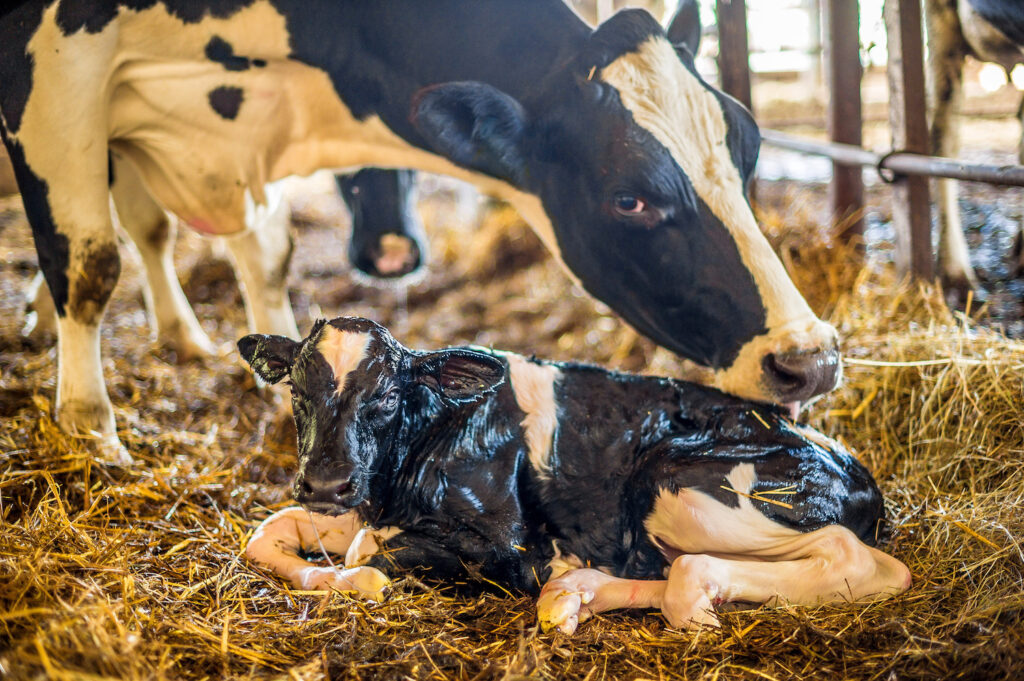Good transition is about giving the cow what she needs
5th December 2022
At transition the dairy cow is perhaps at her highest metabolic vulnerability – she is subject to demands which physiologically she often struggles to sustain. Energy and calcium are two prime examples. Post-calving the cow’s demands for both can suddenly increase by upwards of two-fold compared to what they previously were before calving.
Post-calving cows are naturally predisposed to a reduced feed intake coupled with a high energy demand. Therefore, it’s crucial to feed a high energy diet post-calving and encourage DMI. Transition from a low energy density diet to a high energy density diet requires good ruminal adaptation post-calving; this is greatly supported by the use of a close-up diet 2-3 weeks before calving.
Such diets can be used to begin altering ruminal microbial populations to favour the high energy lactating cow diet. Whilst also avoiding prolonged reductions in rumen pH by beginning the adaptation of the ruminal papillae to effectively remove acids produced by rumen fermentation.
This adaptation can take as long as six weeks, meaning that around calving, the cow is prone to prolonged reductions in rumen pH which commonly manifests into sub-acute ruminal acidosis (SARA), negatively impacting cow health and often reducing feed intake. A good strategy to avoid SARA is through the use of dietary feed ingredients which can optimise rumen pH, keeping it around the desirable range of pH 6.2-7. Although, be careful when selecting rumen buffers, many can actually make the rumen too alkaline or can be poorly rumen soluble and achieve the opposite effect.
Another strategy to boost energy intake at transition is through the use of rumen bypass energy products. Such products do not degrade within the rumen; this way the energy density of the diet can be increased without hindering rumen performance. Instead, rumen bypass products typically degrade within the abomasum where the pH is significantly lower at around pH 3.5-4.
As well as negative energy balance, the fresh cow is also commonly subject to negative calcium balance. This commonly manifests as sub-clinical hypocalcaemia, the risk of which substantially increases with age, typically affecting around 50% of fresh cows beyond second lactation. Supplying a good level of oral calcium post-calving is important, but be sure to provide a bioavailable source. Many sources of calcium can be poorly soluble and therefore the cow doesn’t actually utilise much of the calcium provided with some of it being excreted.
Sub-clinical ketosis, SARA and sub-clinical hypocalcaemia are three of the most prevalent fresh cow metabolic issues, due to the cow’s natural requirement for energy, ruminal adaptation and calcium. A good approach to feeding the dairy cow during transition to support energy and calcium intake can be obtained through the addition of Glycal Forte to transition cow diets, according to Bio-Energy Ingredients. Fed as a powder at 250g per cow a day, Glycal Forte is highly multifunctional; it:
- Optimises rumen pH to the desirable range avoiding SARA, producing a rumen alkalising agent only as and when required
- Provides rumen bypass glycerol to increase the cow’s energy intake without compromising rumen function
- Provides bioavailable calcium chloride to support dietary calcium intake reducing hypocalcaemia.
A combination of the three functions results in the delivery of effective energy, whereby energy intake is increased beyond what the product directly supplies in the form of improved metabolic health, concludes Bio-Energy Ingredients.


